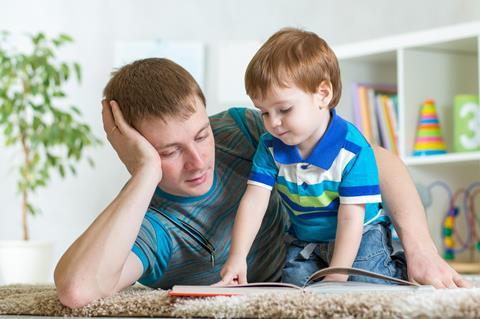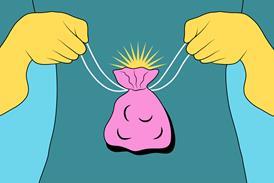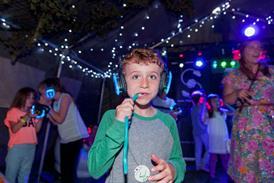Anna Watkin introduces Training Young Hearts, a new series of books for young children on behaviour.

How do you approach your child’s behaviour? Do you find yourself giving commands or trying to persuade? Are you an authoritarian or gentle parent? As a Christian parent, you feel like you want to be able to give your child clear, simple instructions for how they are to behave and why. You also want to speak to their heart, not just their behaviour.
But how often in the tricky moments – faced with your child lashing out at toddler group or refusing (again!) to put on their coat – do you find yourself falling back on the classics: ‘stop doing that’ and ‘because I said so’? And then afterwards end up guiltily comparing yourself to a Bluey’s parents who have seemingly boundless energy, patience and wisdom?
It’s striking that the fifth commandment God gives his people in Exodus: “Honour your father and your mother” (Exodus 20:12a) is the only command that comes with a promise: “so that you may live long in the land your God is giving you” (Exodus 20:12b). It seems that God’s approach to parenting children combines both command and reason. God tells his children how to live but also teaches us why this is good for us. As is usually the case, we discover that God really is the best parent!
This is why the Training Young Hearts series is a gift to parents, carers, and loved ones of toddlers.
What is Training Young Hearts?
Training Young Hearts is a series of lift-the-flap board books, written by Abbey Wedgeworth and illustrated by Emma Randall. Each book takes one of the parts of a child’s body and asks what it was made for. The series includes What Are Eyes For? What Are Mouths For? What Are Ears For? What Are Hands For? What Are Feet For? And coming out on the 1st June 2025, What Are Feelings For?
They are visually beautiful: full of bright, fun, engaging illustrations. Crucially, for toddlers, they are also interactive (each page has a flap to lift) and robust enough for even very enthusiastic hands and teeth!
Each book follows the same pattern. They start with encouraging the child to explore and marvel in the body that God has given them: eyes made to open and close, hands made to wave and high-five, feet made to splash and swim.
Then comes the sad truth that we don’t always use our bodies in the way God intended. God didn’t make ears to tune out grown-ups or friends. He didn’t make mouths to tell lies or to bite. Or hands to snatch or hit.
You might expect the books to end there, with a reminder to use our bodies in the way God intended. But the Training Young Hearts books are full of far more grace than that. We see instead how Jesus always used his body in the way he should: spreading his hands out on the cross; choosing to walk towards his death. And how he loves to forgive and help his children when we ask him. It is a gospel pattern that can transform how you approach your child’s behaviour. Instead of swinging between command and persuasion, you can bring Jesus into even the trickiest moments.
What do parents think?
We’ve had these books in our church’s children’s library for nearly a year, and I asked some of our families what they like and find helpful about them.
“We’ve have been able to talk to our children about asking God to help when we find it hard to use our mouths in a kind way!… The book also points us back to Jesus, making it really easy for our children to understand how he loves and forgives us despite our behaviour… It’s been a great resource in our house!” Tom & Jenni, parents of Teddy (age 4) & Raffy (age 2)
“I’ve been using them to correct bad behaviour like hitting, and reminding that hands were made to make and build.” (Dolly, mum of Max)
“We like the clear and simple language… and especially the pointer to Jesus and how he perfectly obeyed God.” Tom & Becky, parents of Lucy (4) and Jonah (1)
“I like the flaps!” Lucy (age 4)
Why are these so helpful?
I love that there’s a whole series of books that lays the foundation for a Christian understanding of our bodies at a young age. As a children’s worker, I often get asked when the best age is to start helping children engage with questions around identity, and my answer is always: as young as you can. In a culture that encourages our children and young people to shape their bodies around their own sense of identity, it’s vital that we engage thoughtfully and truthfully with the challenges this presents. How much better it is to instil simple truths at a very young age – truths like our bodies are a good gift from a loving Father, and that God designed and made each part of our bodies – than to have to go back in adolescence and try and start the conversation from scratch!
So, if you’re a looking for a simple, fun resource to help your family grow in God’s grace, I recommend you check out these little gems.





























